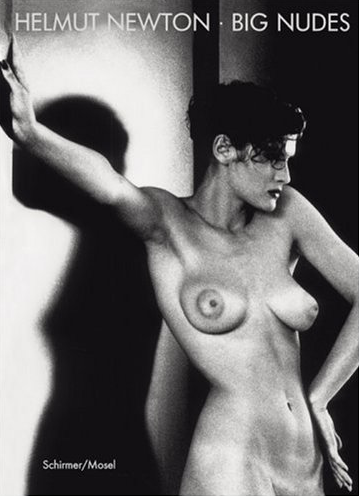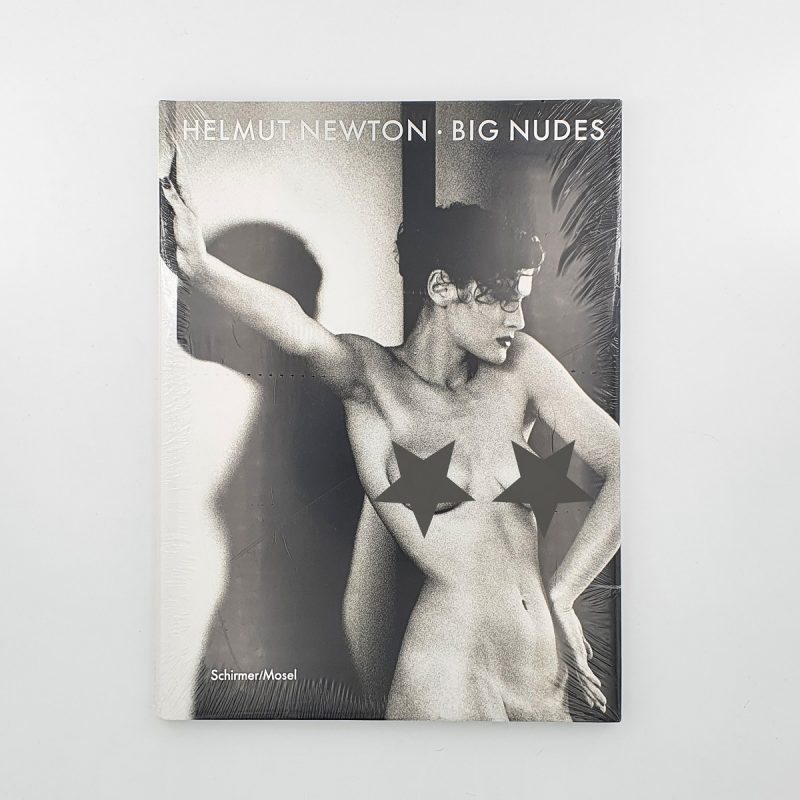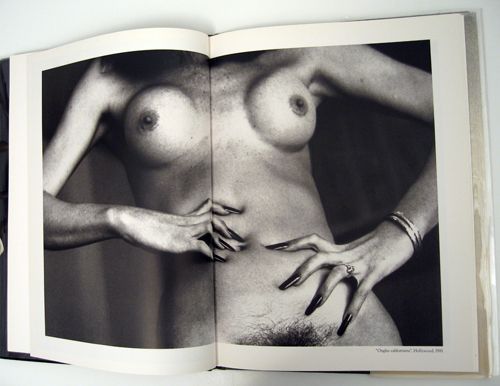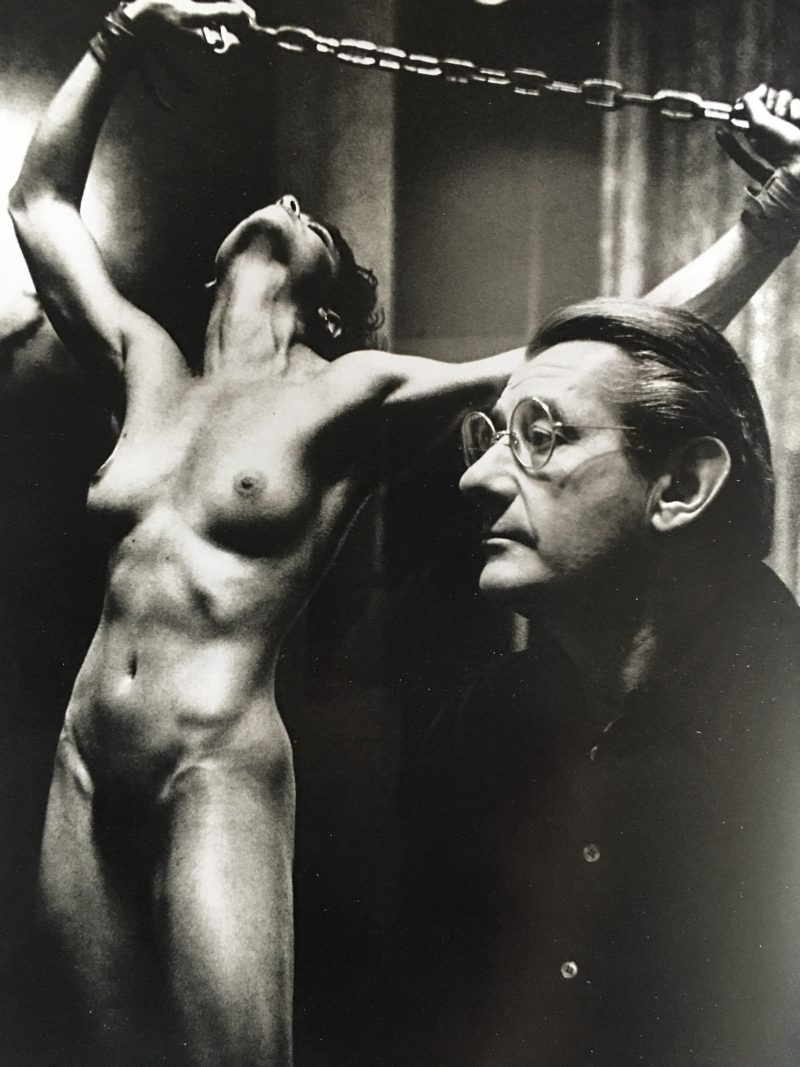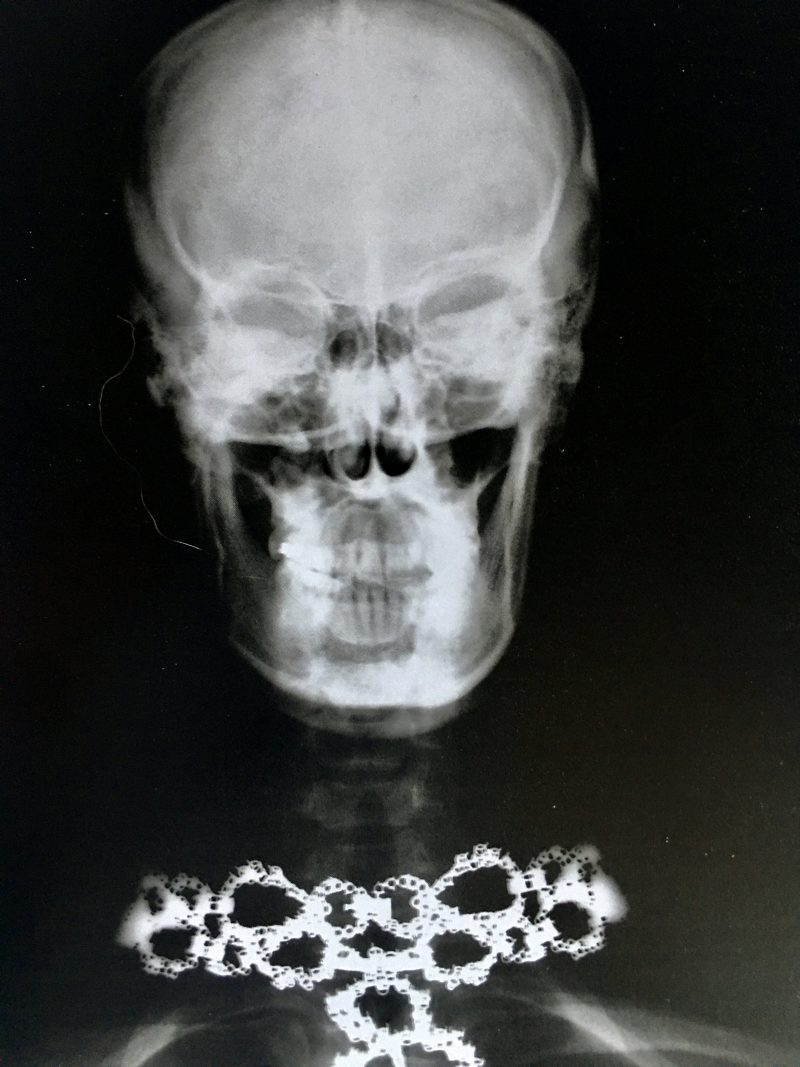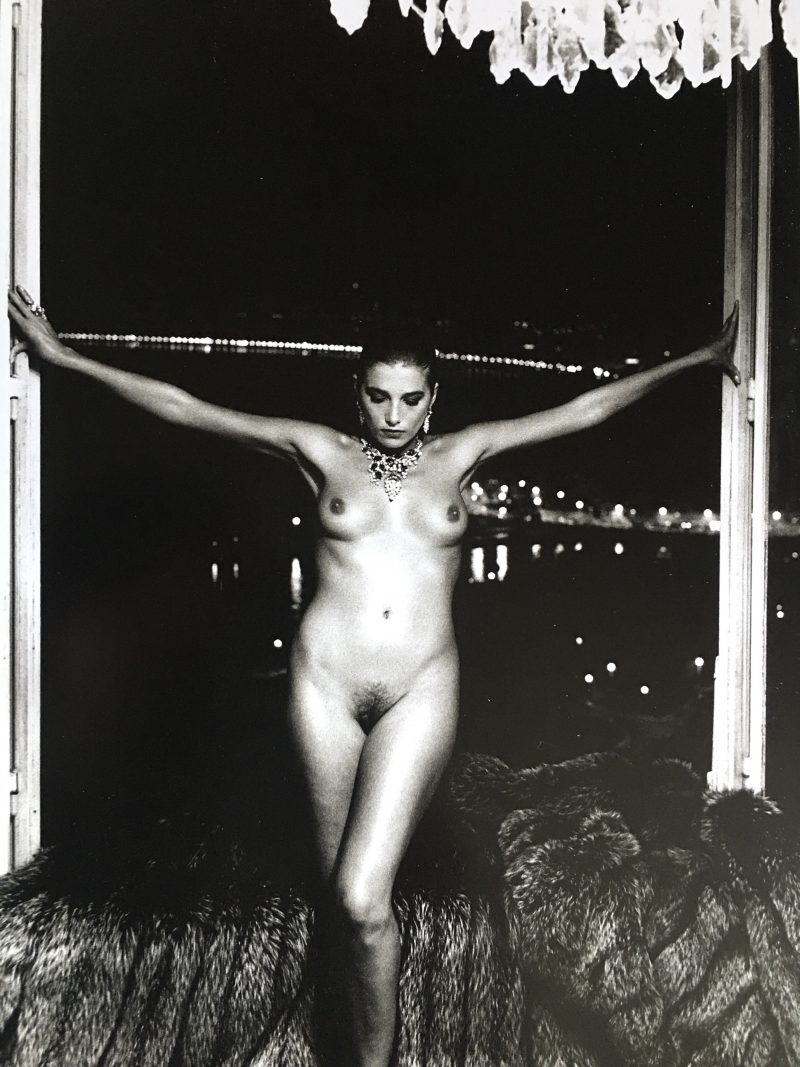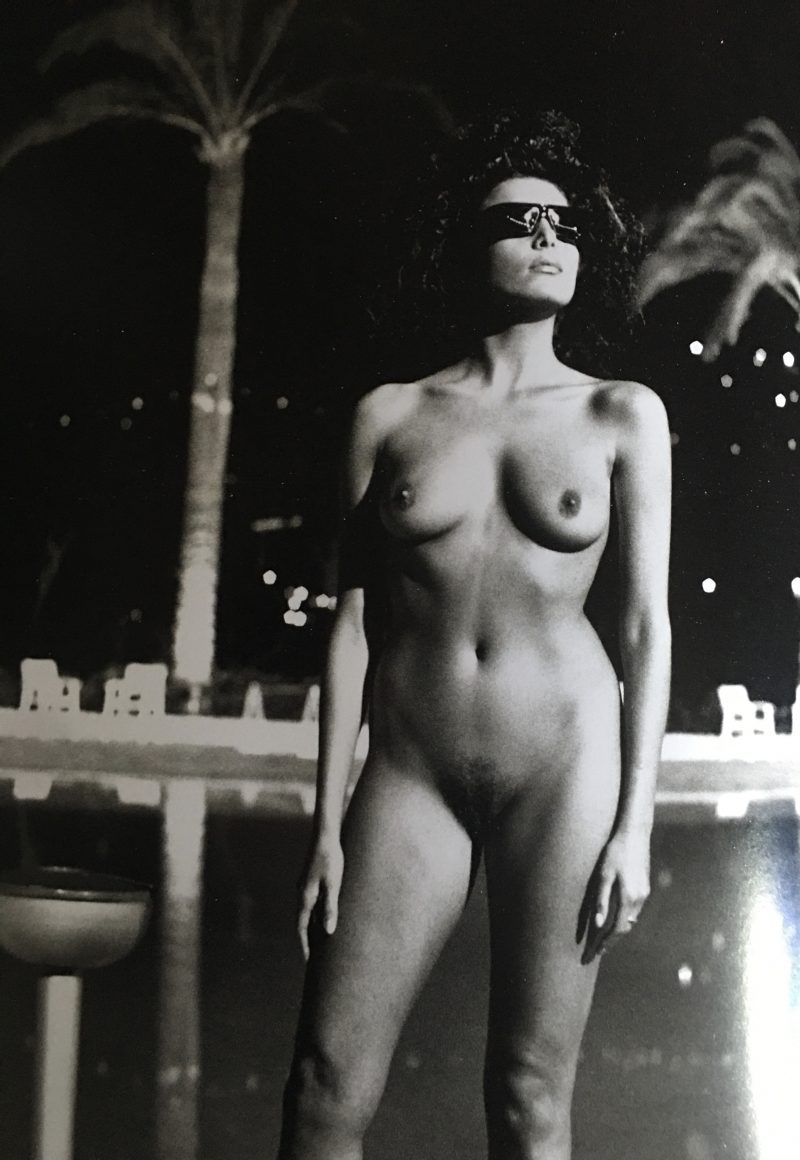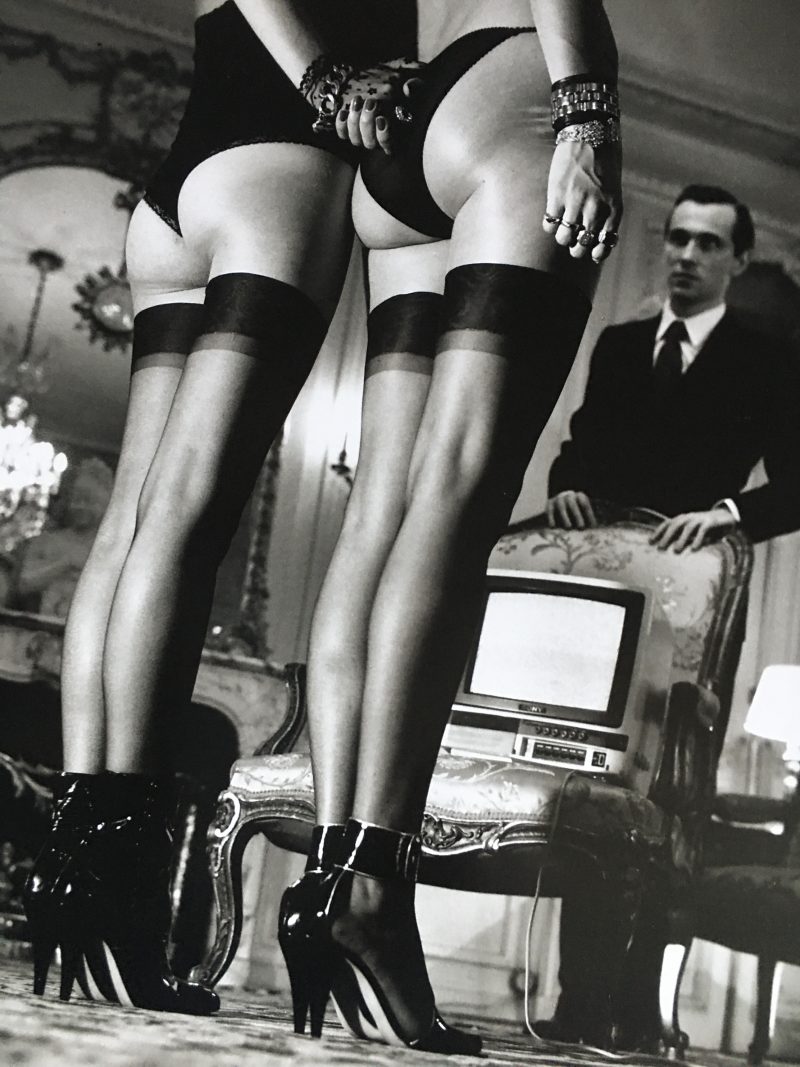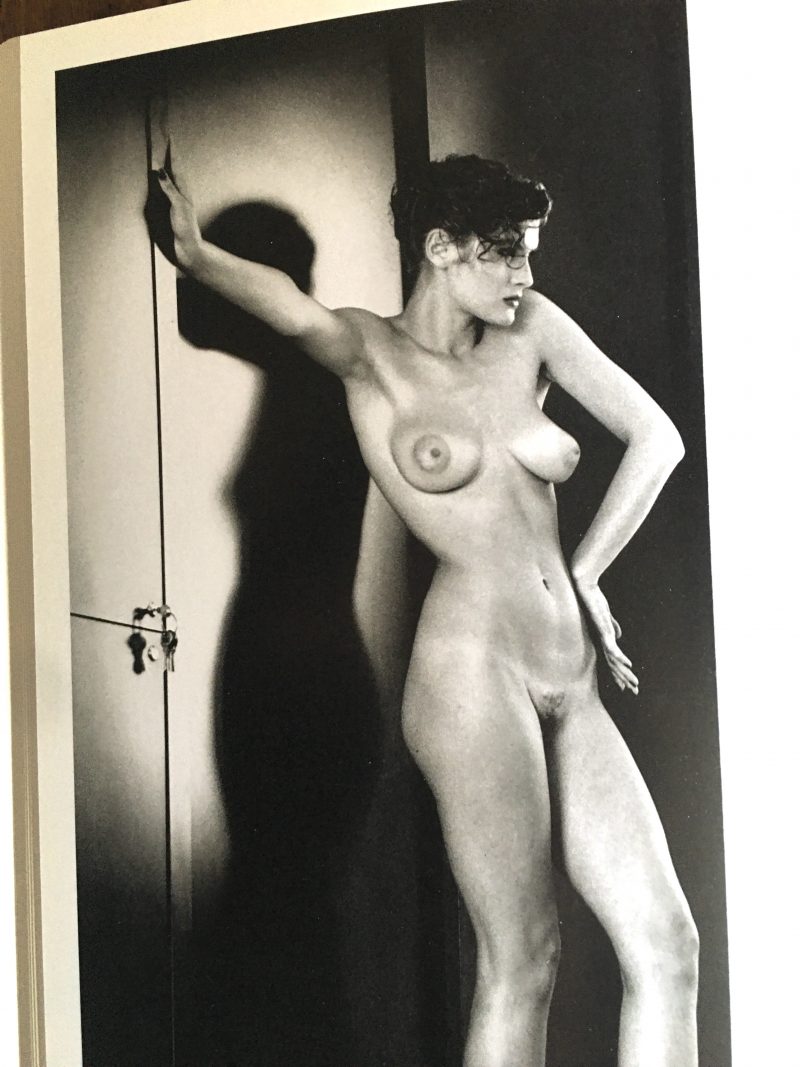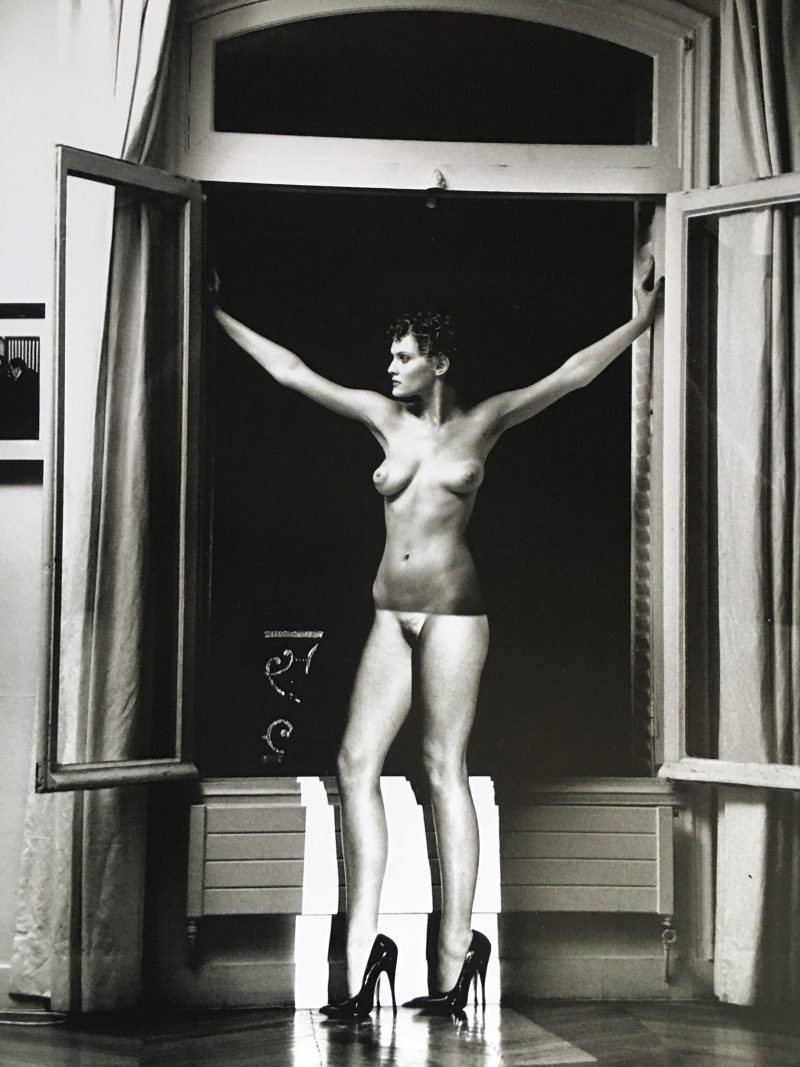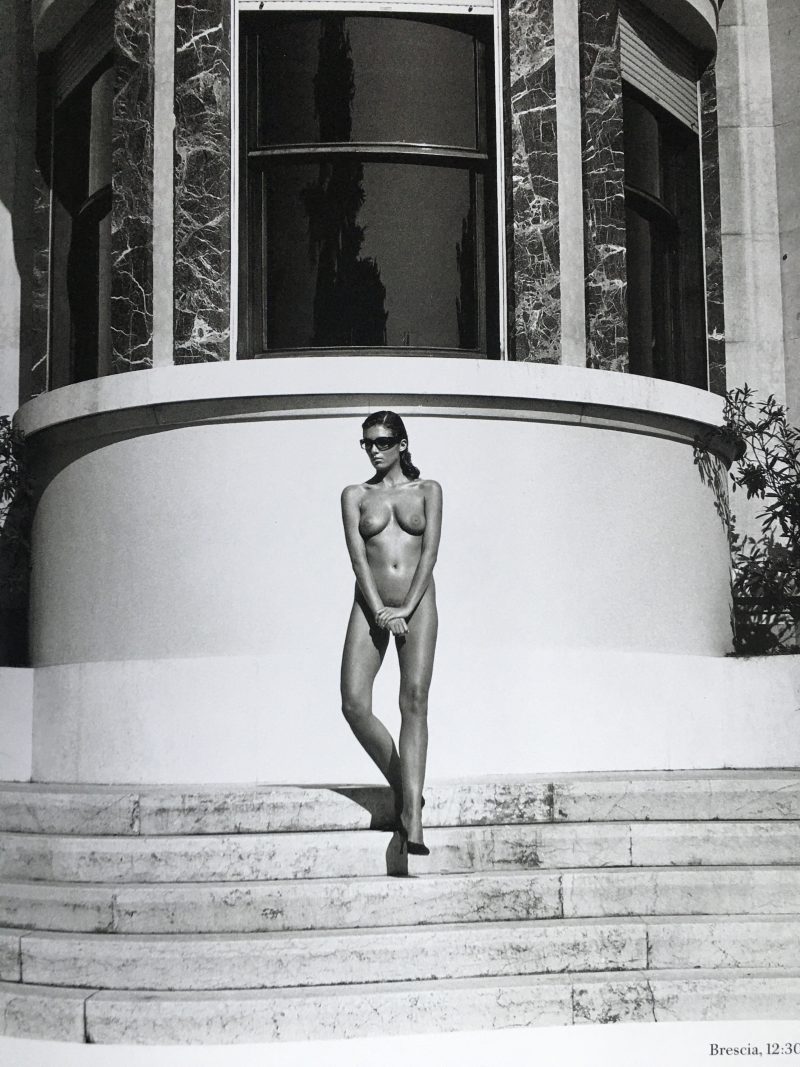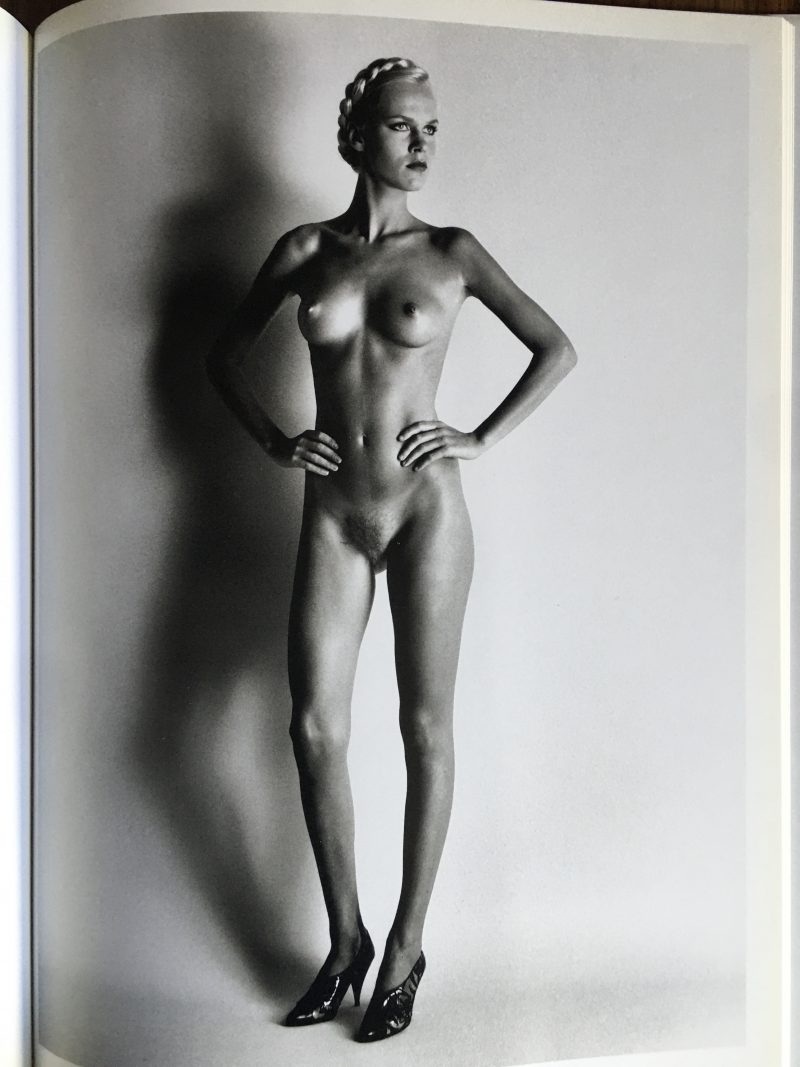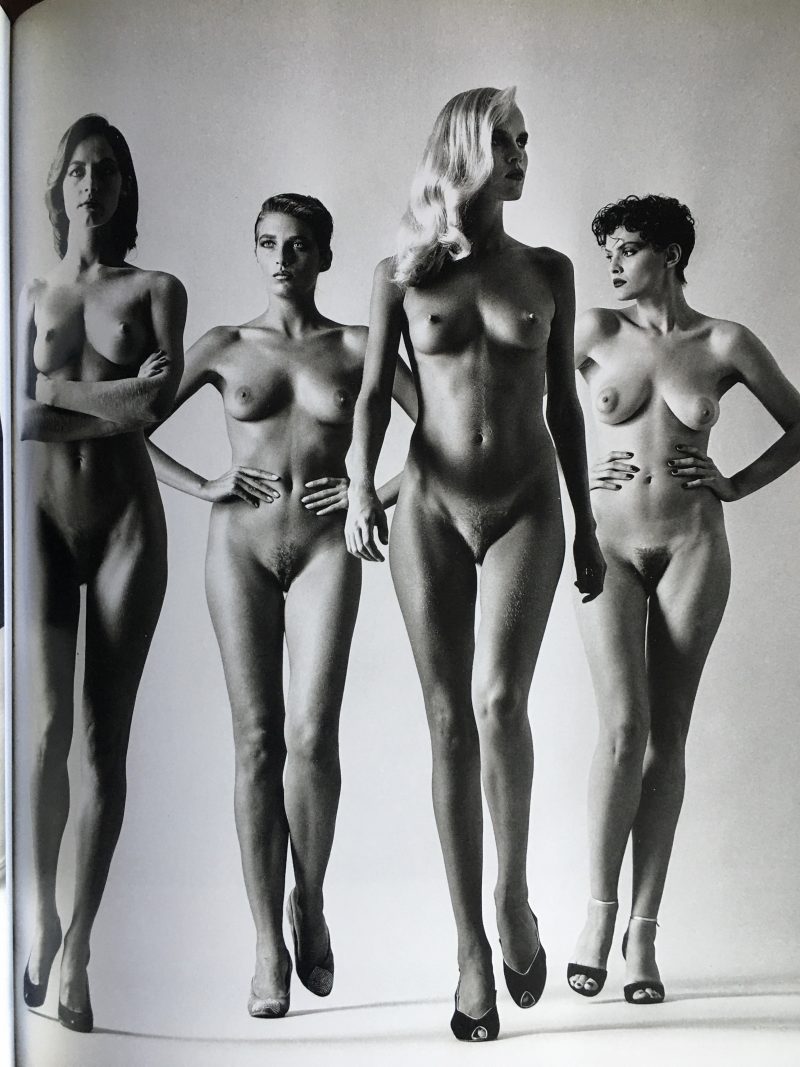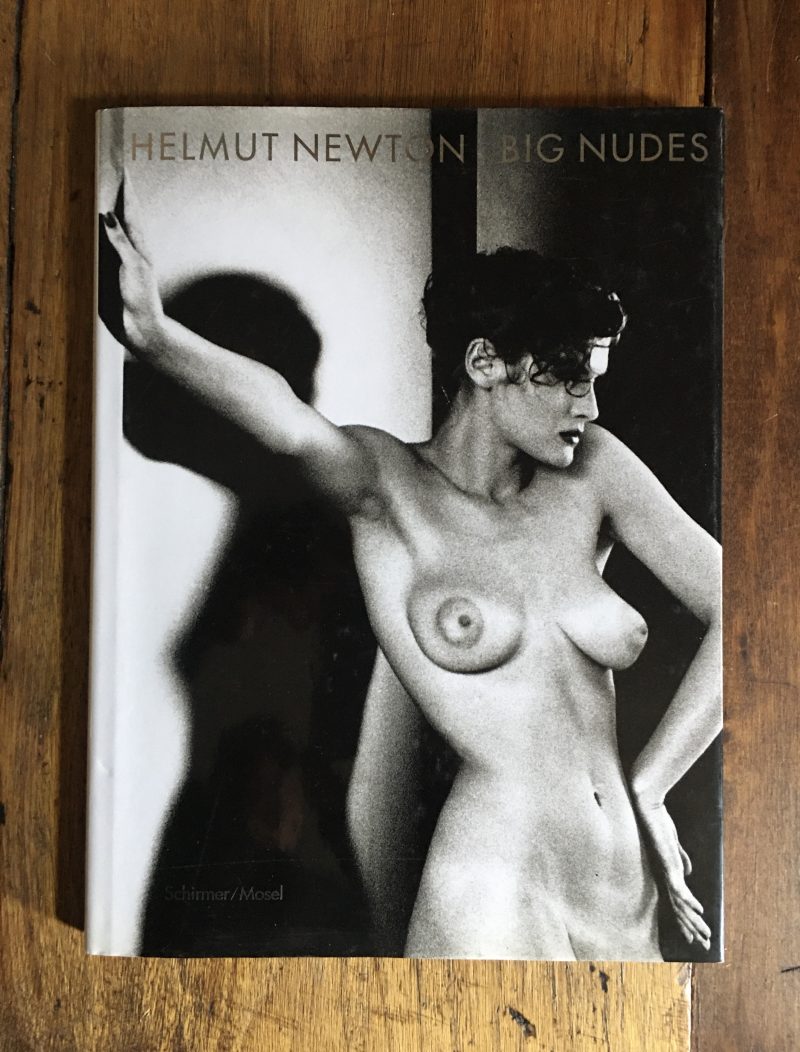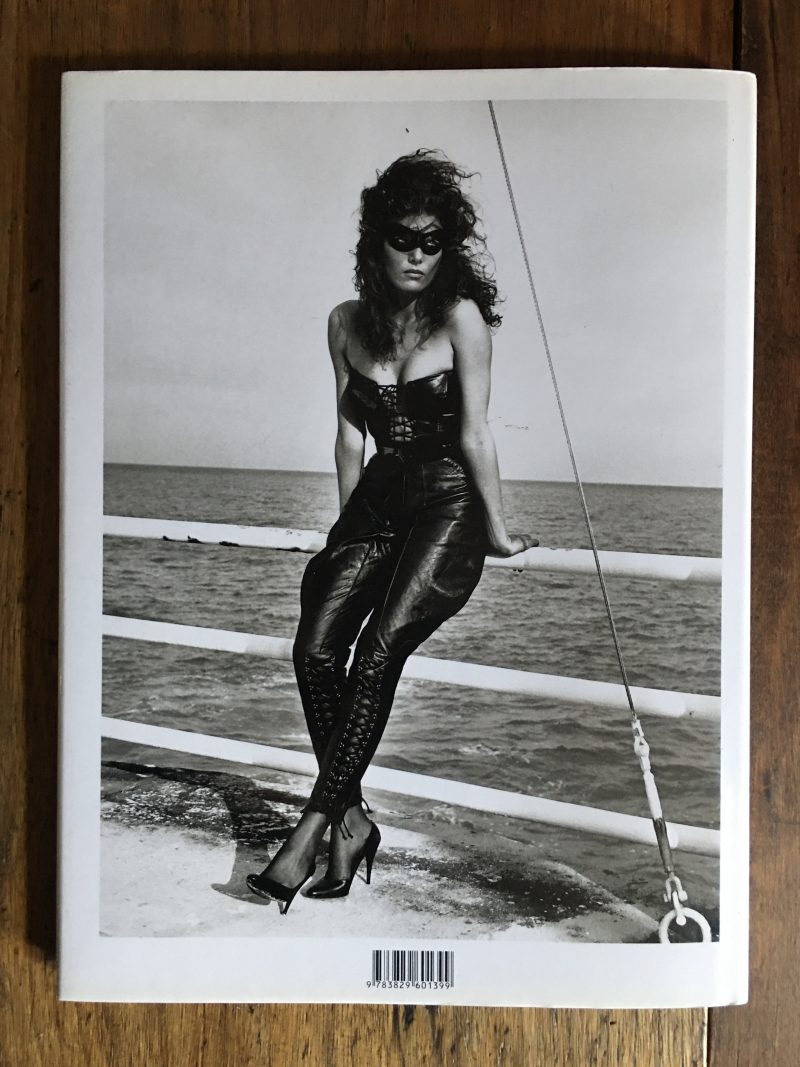Helmut Newton ‘Big Nudes’ 2004
Helmut Newton: Big Nudes Hardcover – June 30 2004
by Karl Lagerfeld
Asking USD$125
- Publisher : Schirmer Mosel; Bilingual Edition / German & English (June 30 2004)
- Language : English
- Hardcover : 88 pages
- Item weight : 898 g
- Dimensions : 23.6 x 1.4 x 31.7 cm
With his Big Nudes, in the 1980s Helmut Newton created a quite unprecedented long-term bestseller. Simultaneously, it provided a concentrated image of his aesthetic agenda. Powerful women were presented in all their naked truth without fig leaves or fashion frills. This series of black-and-white photos, produced between 1979 and 1981, also marked a stylistic change in Newton’s work. Elaborate layouts full of luxury and decadence gave way to an unambiguously formulated and monumental statement “Here they come!”
Dressed only in their indispensable high heels, Newton’s amazons selfconfidently paraded on show. They rippled their muscles and marched individually as well as in formation toward the observer. Helmut Newton’s classic work was published by us in 1990 for the first time.
BIO:
Helmut Newton, born Helmut Neustädter was a German-Australian fashion photographer noted for his nude studies of women.
Born to a German-Jewish button-factory owner and an American mother, Newton attended the Heinrich-von-Treitschke-Realgymnasium and the American School in Berlin. Interested in photography from the age of twelve when he purchased his first camera, he worked for the German photographer Yva (Else Neulander Simon) from 1936. The increasingly oppressive restrictions placed on Jews by the Nuremberg laws meant that his father lost control of the factory in which he manufactured buttons and buckles; he was even briefly interned in a concentration camp. ‘Kristallnacht’ on 9 November 1938 compelled the family to leave Germany.
Newton’s parents fled to Chile. He was issued with a passport just after turning 18, and left Germany on 5 December 1938. At Trieste he boarded the ‘Conte Rosso’ (along with about two hundred others escaping the Nazis) intending to journey to China. After arriving in Singapore, Newton was interned by British authorities and was sent to Australia on board the ‘Queen Mary’. Internees travelled to the camp of Tatura, Victoria by train under armed guard. He was released from internment in 1942, and briefly worked as a fruit-picker in northern Victoria. In April 1942, he enlisted with the Australian Army and worked as a truck driver. After the war, in 1945 he became an Australian citizen, and changed his name to Newton in 1946. In 1948 he married actress June Browne.She later became a successful photographer known as Alice Springs.
In 1946, Newton set up a studio in fashionable Flinders Lane and worked primarily on fashion photography in the affluent post-war years. He shared his first joint exhibition in May 1953 with Wolfgang Sievers, a German refugee like himself who had also served in the same Company. The exhibition of ‘New Visions in Photography’ was held at the Federal Hotel in Collins Street and was probably the first glimpse of ‘New Objectivity’ photography in Australia. Newton went into partnership with Henry Talbot, a fellow German Jew who had also been interned at Tatura.
Newton’s growing reputation as a fashion photographer was rewarded when he secured a commission to illustrate fashions in a special Australian supplement for Vogue magazine, published in January 1956. He won a twelve-month contract with British Vogue and he left for London in February 1957. He left the magazine before the end of his contract and went to Paris where he worked for French and German magazines. He returned to Melbourne in March 1959 to a contract for Australian Vogue.
He settled in Paris in 1961 and continued work as a fashion photographer. His works appeared in magazines including, most significantly, French Vogue and Harper’s Bazaar. He established a particular style marked by erotic, stylised scenes, often with sado-masochistic and fetishistic subtexts. A heart attack in 1970 slowed his output somewhat but he extended his work and his notoriety/fame greatly increased, notably with his 1980 “Big Nudes” series which marked the pinnacle of his erotic-urban style, underpinned with excellent technical skills. He also worked in portraiture and more fantastical studies.
Newton was extremely fond of his hometown of Berlin, and in October 2003 he donated an extensive photo collection to the Prussian Cultural Heritage Foundation, establishing the Helmut Newton Foundation. The foundation’s aim is the conservation, protection and presentation of the oeuvre of Helmut Newton and Alice Springs.
In his later life, Newton lived in Monte Carlo and Los Angeles. He was killed when his car hit a wall in the driveway of the famous Chateau Marmont, the hotel on Sunset Boulevard which had for several years served as his residence in Southern California. It has been speculated that Newton suffered a heart attack in the moments before the collision. His ashes are buried next to Marlene Dietrich.
